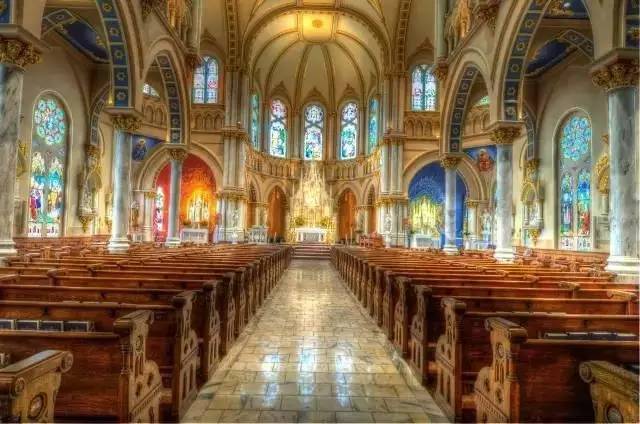Question
Hello Gramps,
I like to study theology and I found some facts about the Catholic faith that have caused some questions that I can’t seem to find answers to. Matt 16:18 basically says that Peter is to build Christ’s church after the crucifixion. Peter then goes on to become the first pope, and then ordain the next pope, etc. So when was the priesthood lost if Peter ordained another pope before he died? How is this compatible with LDS doctrine that once he died, the priesthood was lost. Catholic doesn’t just mean Roman Catholic. Many churches claim the title of Catholic; like Anglicans & Episcopals. Basically any church that claims to have the Priesthood calls themselves “The real Catholic Church started by Peter. ” So shouldn’t we call ourselves Catholic also because we claim the priesthood? Since Catholic means “universal” shouldn’t the one true church be called the Universal (Catholic) Church?
Josh
Answer
Hello Josh,
Thanks for your question. Comparing the truthfulness of the doctrines of two religions always results in conflicting views, whether one compares Catholicism to Mormonism or Catholicism to Presbyterianism. It is difficult to discuss these conflicting views without appearing anti-Catholic or anti-whatever denomination we place under this theological and historical microscope. The information presented here is carefully chosen and presented in a spirit of humility and meekness. The varying churches of Christendom are filled with earnest seekers who profess Jesus as Lord. We respect their faith, but we respectfully disagree as to the historical facts and scriptural interpretations concerning many issues.
The very existence of some 3,000 Christian sects and denominations is plain evidence that there was an apostasy that divided Christians in the two millennia since Jesus organized his Church. Let’s begin with the passage you mentioned from Matthew and then look at what the scriptures teach about what Mormons call “The Great Apostasy.”
Peter’s Testimony
Let’s look at the context of Matthew 16:18, starting with verse 13 of that chapter. In Caesarea Philippi, Jesus inquired of his disciples what the people were saying about him. Their reply was that some people thought he was John the Baptist, who had been murdered by Herod, risen from the dead. Other thought he was the Elias who was prophesied to appear before the Messiah’s return in glory. Others thought he was Jeremiah or some other prophet returned again.
Then Jesus asked them who they said that he was. Consider that, up to this time, Jesus had not openly taught that he was the Son of God. The prevailing concept among the Israelites of the time was that the Messiah would be a mortal king, a descendant of David, who would redeem Israel from Gentile dominion and restore it to a new golden age.
Peter answered for the Twelve, as recorded in verse 16: “Thou art the Christ, the Son of the Living God.” With this testimony, Peter revealed an understanding of something that Jesus had not taught him directly. Not only did Peter know that Jesus was the Christ, but he knew that the Christ was the Son of God, not just a mortal king. He was Divine. This knowledge had been given to Peter by revelation from Heavenly Father. In verse 17, Jesus commends Peter, highlighting how this revealed testimony had come to him.
Peter’s testimony of Jesus was not founded on theology or man’s reasoning. It came from the rock of revelation. In verse 18, Jesus commands Peter, “upon this rock,” the rock of divine revelation from God, he was to build Christ’s Church. Then he conferred the keys of the kingdom upon Peter and the rest of the Twelve to administer the Church. Verse 19 includes the sealing power, to bind up on earth and in heaven, that actions performed by legal gospel administrators would be considered valid in eternity.
This is where we part with Catholics on this question. Because Peter’s name means “rock” or “stone,” they interpret the passage to mean that Jesus intended to build his Church upon Peter. Latter-day Saints understand this to be a play on words. (The Lord did a similar thing when he called Moses, telling him that he would be mightier than many waters—and Moses’ name meant “drawn from the waters.” See Moses 1:25.) The Church of Christ cannot be built upon a man. It is built upon the rock of revelation and the authority of priesthood keys. Paul later described it to the Ephesians in this manner:
19 Now therefore ye are no more strangers and foreigners, but fellowcitizens with the saints, and of the household of God;
20 And are built upon the foundation of the apostles and prophets, Jesus Christ himself being the chief cornerstone…(Ephesians 2:19, italics added).
Apostolic Succession
Now, the second part of your question has to do with the succession of the apostleship anciently. The situation you described in which Peter ordained another “Pope” cannot be historically substantiated. Peter died sometime between 64-68 A.D. According to Fox’s Book of Martyrs, Peter was preceded by other martyrs, namely James the Great, Philip, Matthew, Matthias, Andrew, and Mark. After Peter’s martyrdom, there remained Jude, Bartholomew, Thomas, Simon (Zealotes), and John. If a successor to Peter was to have been chosen and ordained, would that duty not have fallen to one of the existing members of the Twelve? The apostles had set the precedence in this regard in the ordinations of Matthias and Paul.
Fox’s Book of Martyrs tells us that these apostles were widely scattered throughout the world at the time they were killed. Jude was killed in Edessa in 72 A.D. Bartholomew and Andrew were said to have gone into India. Simon Zealotes went into Mauritania in Africa and was killed in 74 A.D. The last of Jesus’ apostles was John. Fox says:
“The “beloved disciple,” was brother to James the Great. The churches of Smyrna, Pergamos, Sardis, Philadelphia, Laodicea, and Thyatira, were founded by him. From Ephesus he was ordered to be sent to Rome, where it is affirmed he was cast into a cauldron of boiling oil. He escaped by miracle, without injury. Domitian afterwards banished him to the Isle of Patmos, where he wrote the Book of Revelation. Nerva, the successor of Domitian, recalled him. He was the only apostle who escaped a violent death” (Italics added).
Note the last sentence. He was the only apostle not to be killed. Latter-day revelation informs us that John was translated and continued to live on earth (see John 21:23). Most scholars estimate the date of the Book of Revelation around 95 A.D. and the gospel of John around 101 A.D. Even if one does not accept that John was translated, he lived into the beginning of the 2nd Century. This is important. The last living apostle would have been the one to transmit the apostleship forward. We have no record or revelation that this occurred in the Primitive Church. Peter would not have been the one to have been succeeded. Any successor would have had to been ordained by John.
What Catholics claim to have occurred is that Peter ordained bishops to preside over local congregations. We know the names of many of these men. There are epistles that many of these “early Church fathers” wrote. In these epistles, they generally repeat apostolic teachings and exhort members to be faithful. In writing to others within the Church, it is clear that they regarded one another as equals, just as our bishops do today. Each was given his area in which he was to preside and they did not assume authority to rule over another’s congregation.
Now consider a hypothetical modern situation. Suppose in the LDS Church today, some terrible disaster killed all the living General Authorities. All that were left of Church leadership were stake presidents and bishops. Now imagine that a bishop near Salt Lake claimed that, because of his proximity to the center of the Church, he should be in charge of the whole Church. Now imagine that rivals emerged elsewhere. Let’s say a bishop in Washington, D.C. claimed that he should have preeminence because he was located in the center of the nation’s political power. Yet another bishop, this one in the Hague or Brussels, center of the World Court or the European Union declared his “primacy.”
That’s exactly what happened with these early bishops. With the apostles gone, the Bishop of Rome claimed preeminence over the rest of the Church. It took quite some time for that claim to become persuasive, but it was not accepted by the full Church. The Bishop of Constantinople also claimed primacy. A great division occurred and there remain two Popes over two “Catholic” churches today. These “bishops” claimed apostolic authority that was never bestowed upon them.
Why didn’t John appoint a successor? Most likely because the apostasy was already far advanced at this point. There is a mistaken notion, even among some latter-day saints, that the apostasy was caused by the world rejecting the gospel and persecuting the Church. In reality, the apostasy occurred because members of the ancient Church rejected apostolic teachings and adopted false ones.
The Great Apostasy
The Lord and the apostles predicted that an apostasy—a falling away—would occur. The Bible, compiled after the beginnings of the Great Apostasy, recorded these predictions: Isaiah warned that “This people draw near me with their mouth” but their hearts were far from God. (Isa. 29:10, 13.) and that spiritual darkness would cover the earth (Isa. 60:2). Amos said there would be “a famine of hearing the words of the Lord.” (Amos 8:11) Jesus himself said there would “arise false Christs and false prophets” to oppose the true ones (Matt. 24:24), but that you would recognize them by their fruits.
Paul said that after his departure that “grievous wolves shall enter in among you” (Acts 20:29). After preaching to the Galatians, he was astonished at how fast this process of apostasy had taken root among them. He wrote, “I marvel that ye are so soon removed from him…” (Gal. 1:6). Paul also sought to allay the anticipation of an immediate return of Christ when he wrote concerning the anxiety for this event to the Thessalonians. He told them that that day would not come until there had been a falling away first and that the “son of perdition” would be revealed first (2 Thes. 2:3).
Paul also told Timothy that some church members would err concerning the truth about the time of the resurrection (2 Tim. 2:18) and that even believers would be led astray, having “a form of godliness” but deny the power thereof, (2 Tim. 3:5). Paul also told him that the time would come when the church itself would “not endure sound doctrine” and would turn away from the simple truths Jesus taught, following false teachers instead (2 Tim. 4:3-4).
Peter gave similar warnings to the church, saying that there would be false prophets and false teachers among the people (2 Pet. 2:1). Jude tells us in present tense that there were certain men crept in who were leading the ancient saints astray (Jude 1:4).
Not insignificantly, John, said that the leaders of some Christian congregations had rejected the apostles while they still lived and excommunicated those who sustained the ordained apostles of Jesus (3 John 1:9-10). In the messages to the seven churches in Asia, John wrote that some men, claiming to be apostles, sought to lead the church astray. The church in Ephesus had tried them by ecclesiastical authority and found them to be liars. (Rev. 2: 2).
Without the living oracles, controversies over doctrines further divided the ancient Church. The Church split into groups called Marcionites, Montanists, Gnostics, Ebionites, Simonians, Cleobians, Dositheans, Gortheonians, Masbotheans, Meandrians, Carpocratians, Valentinians, and many other sects, all of which introduced false teachings and errant doctrines into the mix.
Joseph Milner’s History of the Church of Christ (a respected, non-LDS source) contains many citations from early Christian leaders describing the decline of faith, disappearance of spiritual gifts, and other signs of decay. Cyprian, Bishop of Carthage, wrote:
“Even many bishops, who ought to be guides and patterns to the rest, neglected their stations, gave themselves up to secular pursuits. They deserted their places of residence and their flocks; they traveled through distant provinces in quest of pleasure and gain; gave no assistance to the needy brethren; but were insatiable in their thirst of money. They possessed estates by fraud and multiplied usury” (Milner).
The ancient historian Eusebius wrote:
“But some that appeared to be our pastors deserting the law of piety, were inflamed against each other with mutual strifes, only accumulating quarrels and threats, rivalship, hostility and hatred to each other, only anxious to assert the government as a kind of sovereignty for themselves (Eusebius’ Eccl. Hist., Bk. viii, ch 1).
By the Fourth Century, controversies had so threatened the Church that the disunity threatened Constantine’s empire. The Emperor, despite being a sun-worshiper, convened the Nicene Council to resolve the questions of Arianism. Was Christ God or man? Was he created or eternal? Are the Father and Son separate and distinct or manifestations of the same Being? The Nicene Creed, intended to unite the Church, fractured it. Neoplatonism altered the concept of the Godhead. The Athanasian Creed is attibuted to this period, even though it was not discovered until nearly eight centuries later.
Creeds multiplied from the Fifth Century onward. These uninspired creeds which came from the intellect of uninspired men—in a Church that had denied that further revelation would be given since the Second Century (as a result of the heresies of Marcion and Montanus)—became the creeds which the Lord called “an abomination” when he appeared to Joseph Smith in the Sacred Grove, in the 19th Century.
You mentioned the Episcopals and other Protestant denominations as part of this “universal” Church, but their existence is also the result of the apostasy. They claimed that the Catholic Church had become corrupt and they separated themselves from it. Some Lutherans (even to this day) consider the Papacy to be the Antichrist. Just a few years ago, this cause embarrassment for Congresswoman and 2008 presidential candidate Michele Bachmann when the web site of her former church made this claim and it was brought to light by her opponents (See Michele Bachman’s former church explains pope ‘anti-Christ’ claims).
Even among Protestants, the historical disunity led to strife. Calvin consented to the burning of the stake of Servetus, whom he considered a heretic. King Henry VIII formed the Church of England in order to break away from the Roman Church for political and personal reasons. By what authority did he do so? Tyndale and Huss were killed for their desire to put the Bible into the hands of the common folk.
The Church of England established the Westminster Confession of Faith in 1646, which still serves as the functional creed for modern Protestantism. It includes the following claims:
“The whole counsel of God, concerning all things necessary for his own glory, man’s salvation, faith, and life, is either expressly set down in Scripture, or by good and necessary consequence may be deduced from Scripture: unto which nothing at any time is to be added, whether by new revelations of the Spirit, or traditions of men . . . The Supreme Judge, by which all controversies of religion are to be determined, and all decrees of councils, opinions of ancient writers, doctrines of men, and private spirits, are to be examined, and in whose sentence we are to rest, can be no other but the Holy Spirit speaking in the Scripture” (italics added).
The Confession denies the possibility of current and future revelation from God and limits God to only speak through the Bible. It also declares God’s nature to be “a most pure spirit, invisible, without body, parts, or passions” in clear contravention to many scriptures that describe God with a body, parts, and passions.
In the new lands of America, Protestant reformers came to find religious freedom and brought their controversies with them. In the decades prior to Joseph Smith’s First Vision, many Protestant ministers questioned the loss of authority and the keys of the kingdom, and they hoped for their restoration. Roger Williams, pastor of the oldest Baptist Church in America at Providence, Rhode Island, refused to continue as pastor on the grounds that,
“There is no regularly-constituted church on earth, nor any person authorized to administer any Church ordinance: nor can there be, until new apostles are sent by the great Head of the Church, for whose coming I am seeking.” (Picturesque America, or the Land We Live In, ed. William Cullen Bryant, New York: D. Appleton and Co., 1872, vol. 1, p. 502, italics added).
Williams also said, “The apostasy… hath so far corrupted all, that there can be no recovery out of that apostasy until Christ shall send forth new apostles to plant churches anew” (Underhill, Edward, “Struggles and Triumphs of Religious Liberty”, cited in William F. Anderson, “Apostasy or Succession, Which?”, pp. 238-39, italics added).
John Wesley, the founder of Methodism wrote in his sermon, “The More Excellent Way” the following indictment of Christianity:
“The cause of this [decline of spiritual gifts following Constantine] was not, (as has been vulgarly supposed,) `because there was no more occasion for them,’ because all the world was become Christians. This is a miserable mistake; not a twentieth part of it was then nominally Christian. The real cause was, `the love of many,’ almost of all Christians, so called, was `waxed cold.’ The Christians had no more of the Spirit of Christ than the other Heathens. The Son of Man, when he came to examine his Church, could hardly `find faith upon earth.’ This was the real cause why the extraordinary gifts of the Holy Ghost were no longer to be found in the Christian Church; because the Christians were turned Heathens again, and had only a dead form left.”
As recently as 2007, NBC News reported on a published declaration by Pope Benedict that Protestants and other non-Catholic denominations cannot be true churches. According to NBC,
Christ ‘established here on earth’ only one church,” the document said. The other communities “cannot be called ‘churches’ in the proper sense” because they do not have apostolic succession — the ability to trace their bishops back to Christ’s original apostles
(Pope: Other denominations not true churches).
I mention this last quote from Pope Benedict because Mormons are often regarded as contentious in our claim to be the true Church of Christ. If so, we are no more contentious than the living emeritus Pope who still retains his title, although there is a second living Pope today.
Thus we come full circle. The Roman Catholic Church claims that Protestants, Mormons, and other non-Catholic denominations are not true churches and cannot save their members. He claims apostolic succession to the keys Christ gave to Peter in Matthew 16. So does the Patriarch of the Eastern Orthodox Church. Protestants invented a doctrine called the “priesthood of all believers” which conveniently justified their lack of any apostolic authority whatsoever. Mormons use scripture and history to show that those keys were never transmitted beyond the apostle John and that an apostasy occurred long before the Catholic Church evolved from the contentious fragments of what remained after the Great Apostasy destroyed the Primitive Church over which the apostles presided. There never was a “universal” church. There was only a need for a restoration of that which had been lost anciently.
What is a seeker of truth to do? The Book of Mormon gives us the solution. We can approach God in humble prayer, with a submissive will to act on the answer he gives us. We can pray to know if the Book of Mormon is true and if God did indeed appear to Joseph Smith. When we receive the Spirit’s witness of those truths, our answer is clear. That spiritual confirmation validates Joseph Smith’s First Vision and the divine revelations that followed to restore the Church.
An apostasy did indeed occur. The Godhead appeared to Joseph Smith to correct the false notions about what and who God is and where the true Church was to be found. At that moment in 1820, Joseph was expressly commanded to not join any of the existing denominations. The Lord told him they were all wrong. The Lord said that the creeds that developed after the apostasy occurred were abominations to him. Those who advanced and promoted those creeds were corrupt and “taught for commandments the doctrines of men” (Joseph Smith History—1:19).
It is difficult making these claims without sounding arrogant. It would be nice if all the various sects and denominations could sit down, calmly discuss things, and agree to follow the Father’s will. However, the trend for 2,000 years has been fractiousness and division. When the Restored Gospel is taught, it often becomes the target of the existing denominations who then persecute and deride it.
The Lord has revealed the way to find unity. His way is for us to share the gospel and for those who believe it to repent, be baptized, and follow the living prophets and apostles whom he has set over the Church, with all the same keys and authority that existed anciently. True Christian unity can only occur when believers unite behind those who hold the apostolic keys that were restored by heavenly messengers as part of the “restitution of all things” predicted by the apostle Peter himself, in Acts 3:21. That is the goal for which all latter-day saints pray intently.
Gramps







